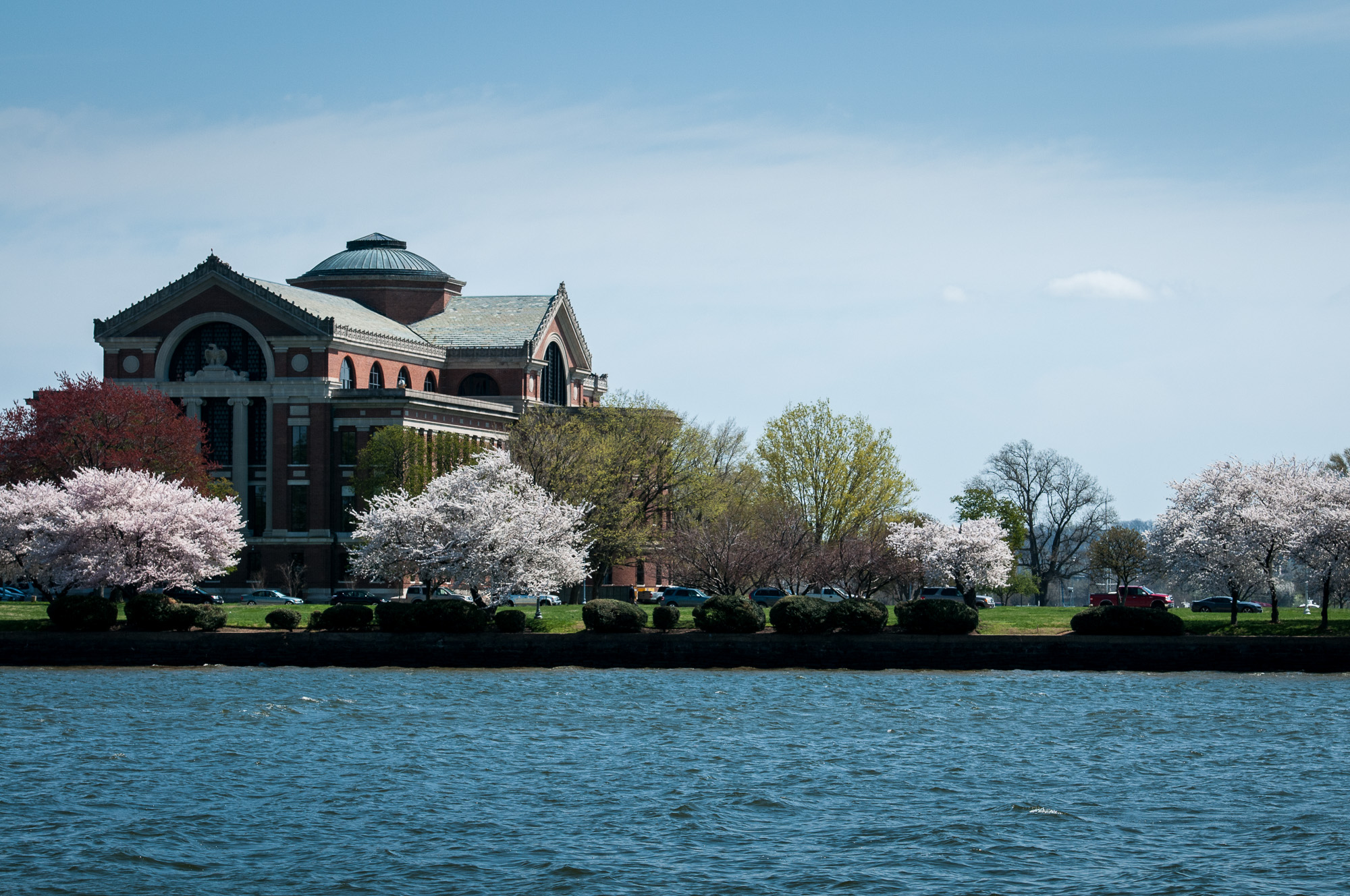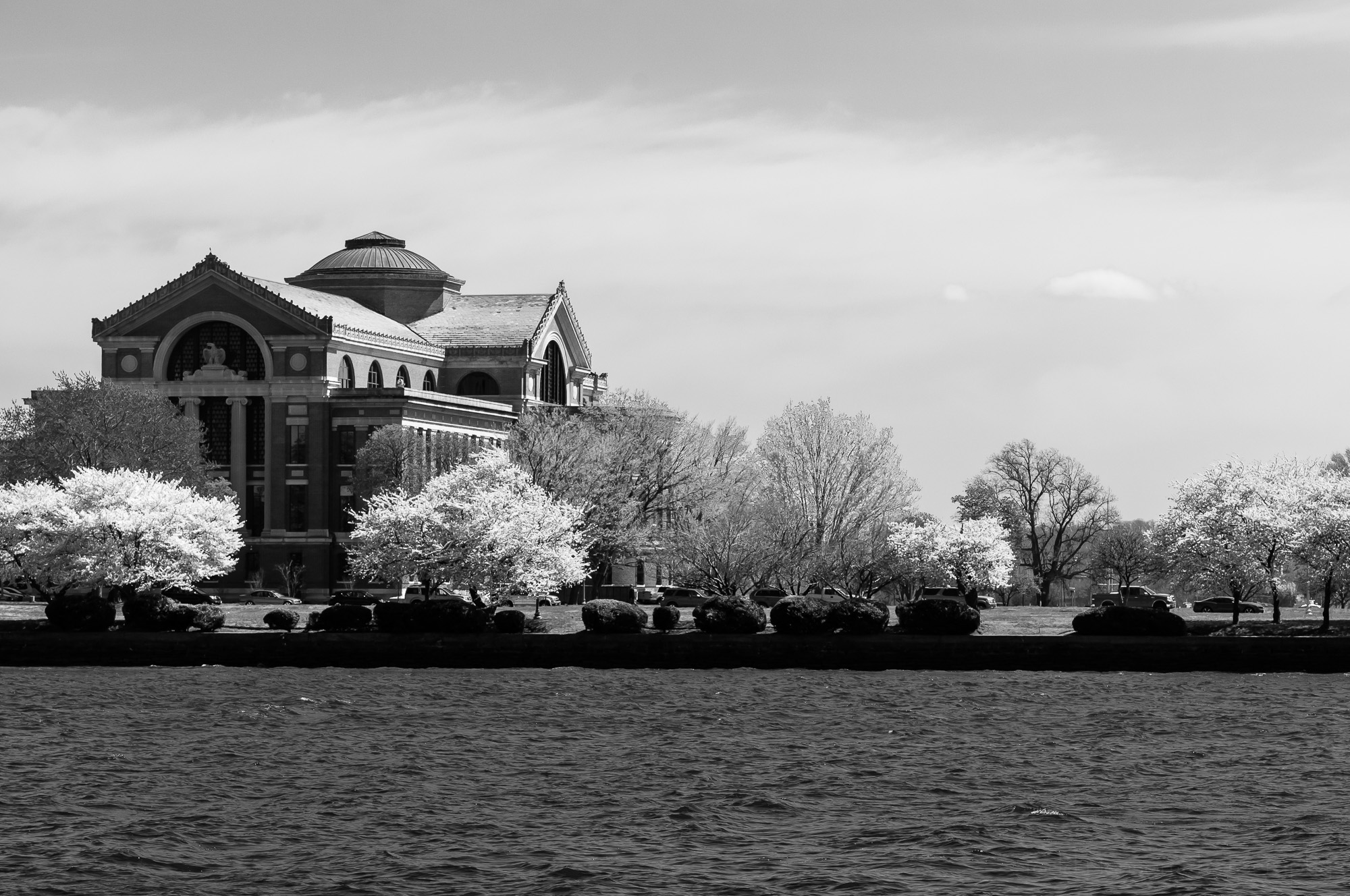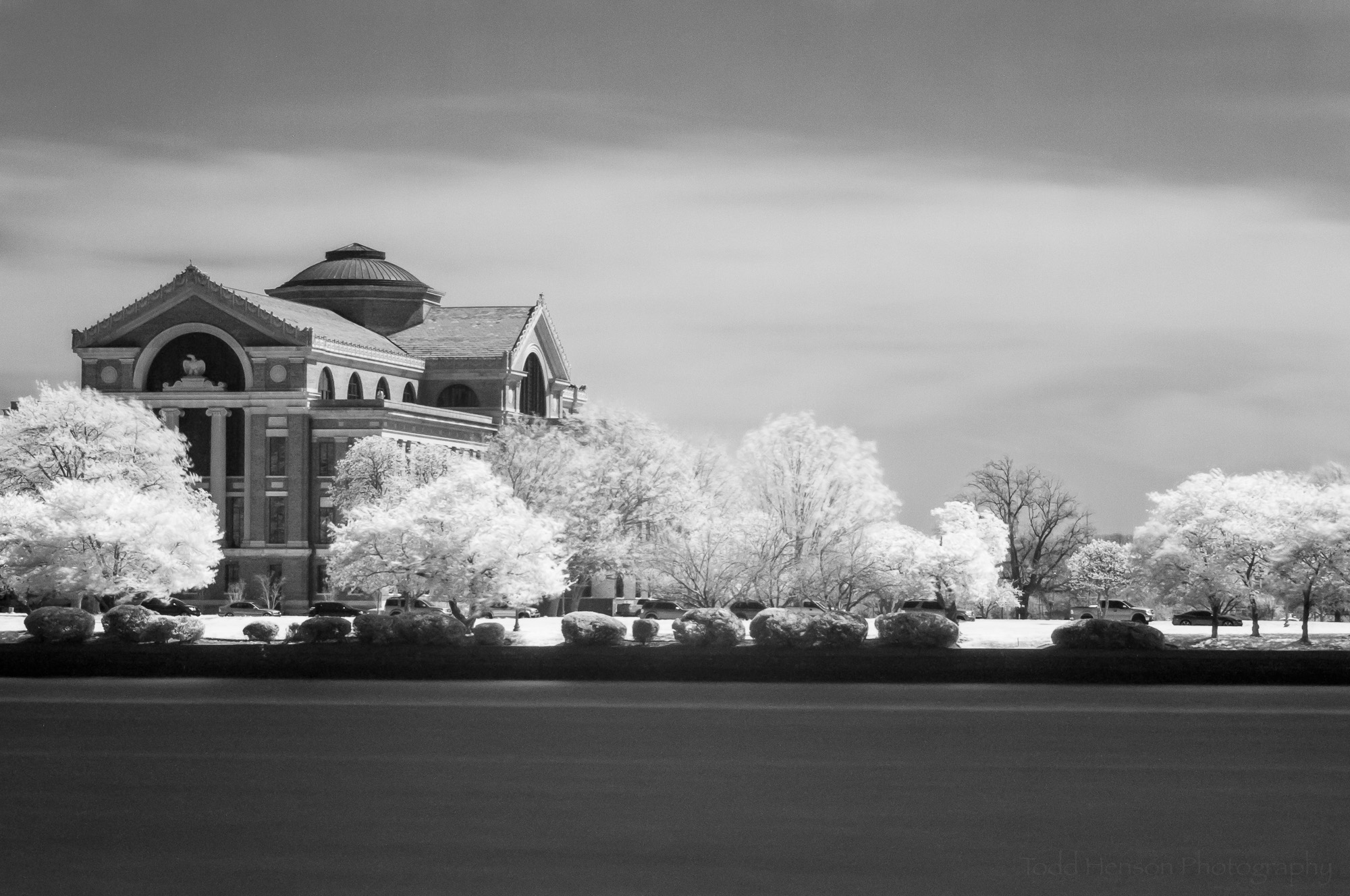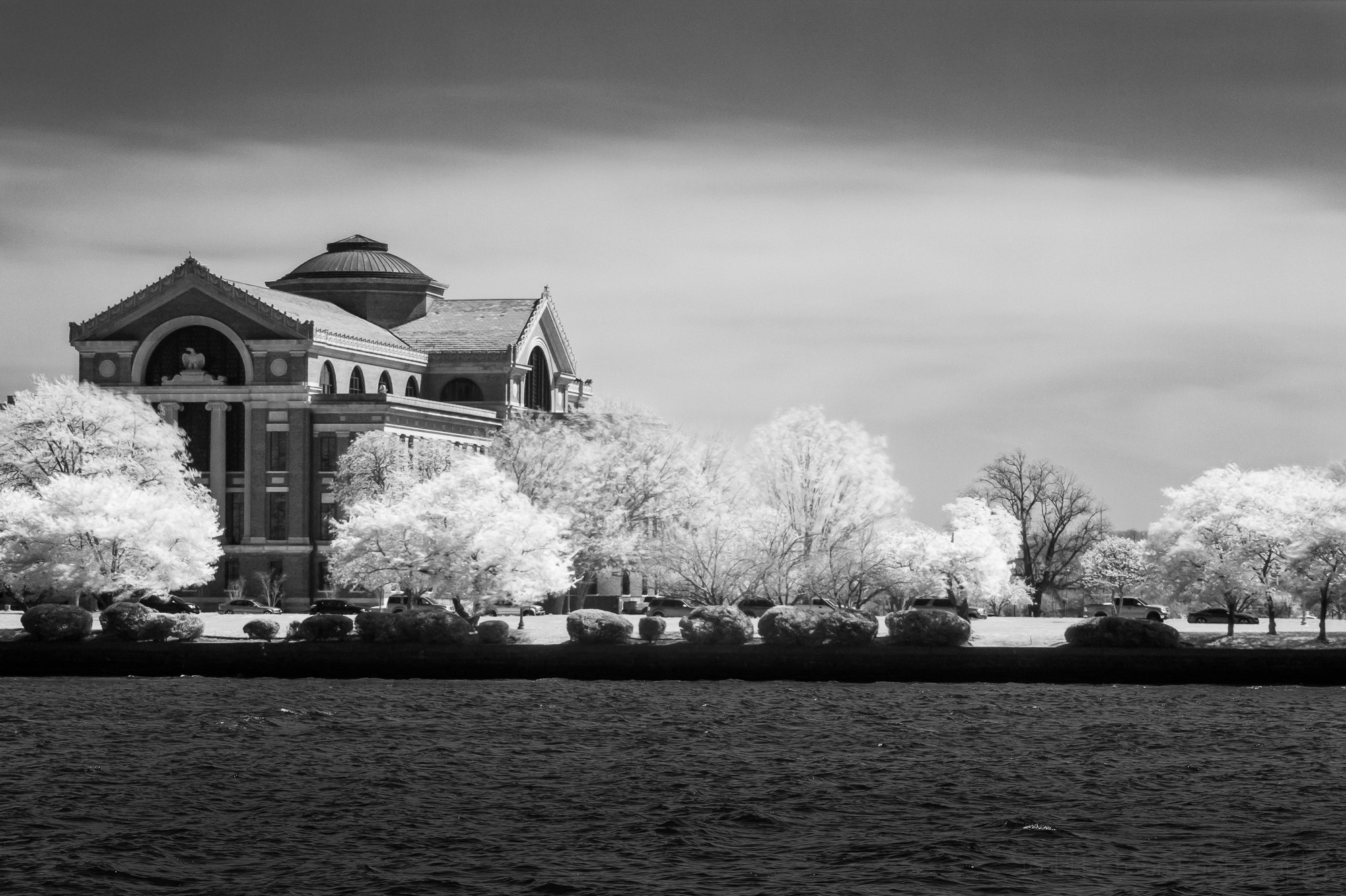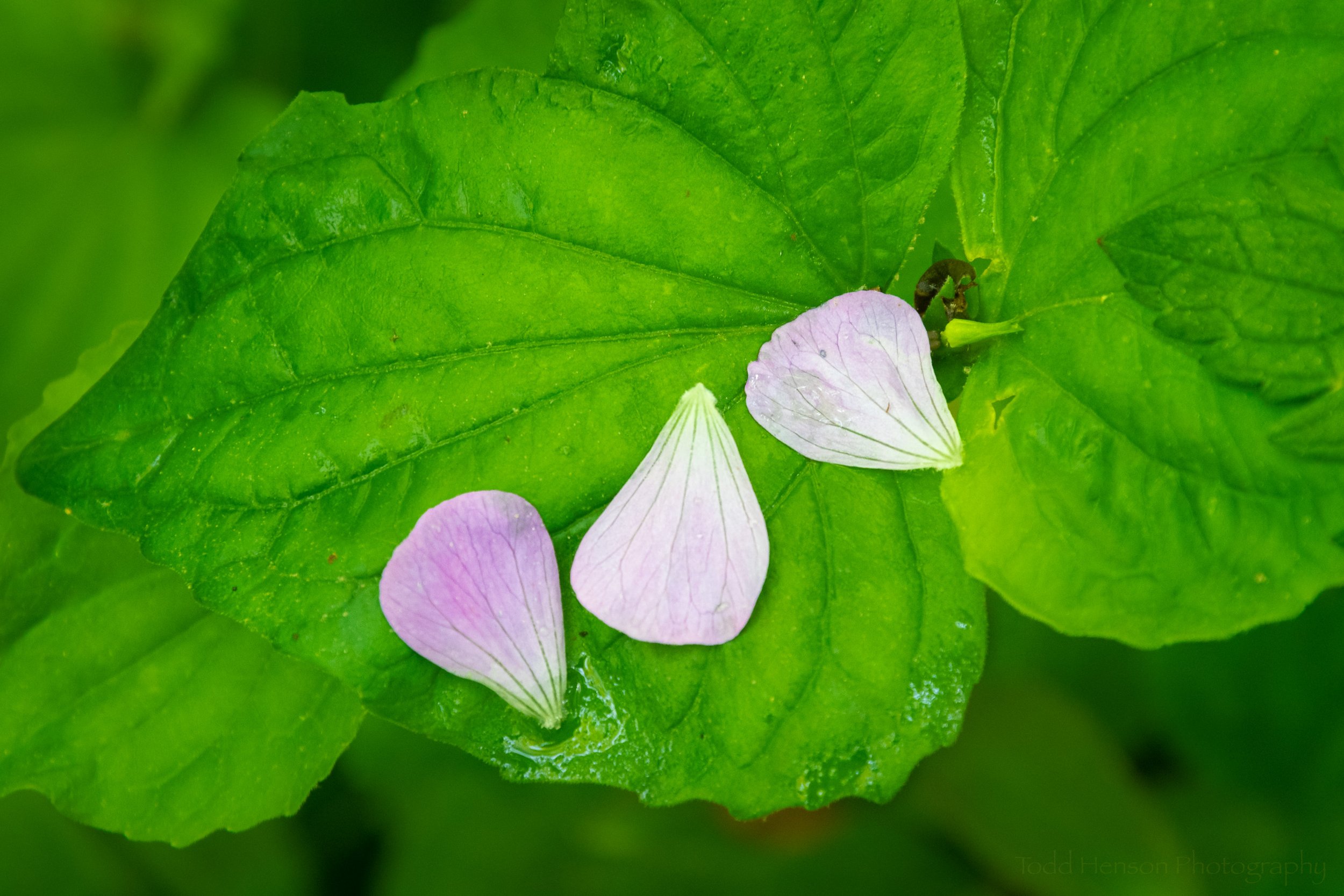Most people create photos from the same position, standing up and holding the camera at eye level. There’s not necessarily anything wrong with that, but if you always do it most of your photos will end up looking the same. If you’d like to give your photos a different look try shooting from different perspectives. Get up higher if you can, perhaps using a ladder. Lean down lower, or even lay on the ground. These different perspectives will help you create a range of images. The 3 images in this post are one example of how changing perspective can affect the look of an image.
Highest perspective. Prospect Harbor Point Light, a lighthouse in Maine.
The first photo was created at eye level. I was standing on a small raised portion of land looking out over the water. I thought it was a beautiful scene, with a very picturesque lighthouse on the far shore and some great fishing boats in the water for added interest. I like the photo. I think it works. But I knew there were other possibilities.
Middle perspective. Prospect Harbor Point Light, a lighthouse in Maine.
For the second photo I walked along the road, looking out at the lighthouse, watching the perspective change as I slowly walked downhill, closer to water level. If you look closely you can see the angle of the house beside the lighthouse has changed. The second image is more parallel to the camera. The first image was angled just slightly allowing you to see just a sliver of the left side. I also like this second image, and I think it also works. The elevation change has slightly changed the look of the image, but mostly the different look is due to a different composition. I was walking around, trying different shots.
Lowest perspective. Prospect Harbor Point Light, a lighthouse in Maine.
Finally, I walked all the way down to the water, to a small sandy beach. I found a position where I almost had a clear view of the lighthouse, with just a couple boats to the right. But to really change the look of the third image I got down low, bringing the camera almost to water level. You can tell it is a much lower position because the lighthouse now extends above the tree line. In the first image the lighthouse just reached the top of the tree line, and in the second it extended a little above it. To add a little more interest to the image I opened the aperture all the way, creating a very shallow depth of field, throwing the foreground water out of focus. I like this last image, and think it also works.
None of the images are necessarily better than the others. But each is different, both because I tried different compositions and because I changed my perspective, getting lower for each image. This is just one small example of how changing perspective can affect the look of an image. In this case it was subtle changes, but you can also create drastically different photos by changing perspective.
Next time you go out shooting I encourage you to try different perspectives. Don’t create all your images from the same eye-level perspective. Try different angles and different heights. If you’re photographing something down low, such as a flower, insect, or child, try getting down to their level. You’ll be creating an image from the perspective of your subject, and that can be an interesting change from the typical eye-level perspective.
Do you enjoy these posts?
Sign up to receive periodic emails with updates and thoughts. Don’t worry, I won’t spam you. And please consider purchasing artwork or products from my online store, and using my affiliate links in the sidebar to the right when shopping online.
I appreciate your support!































